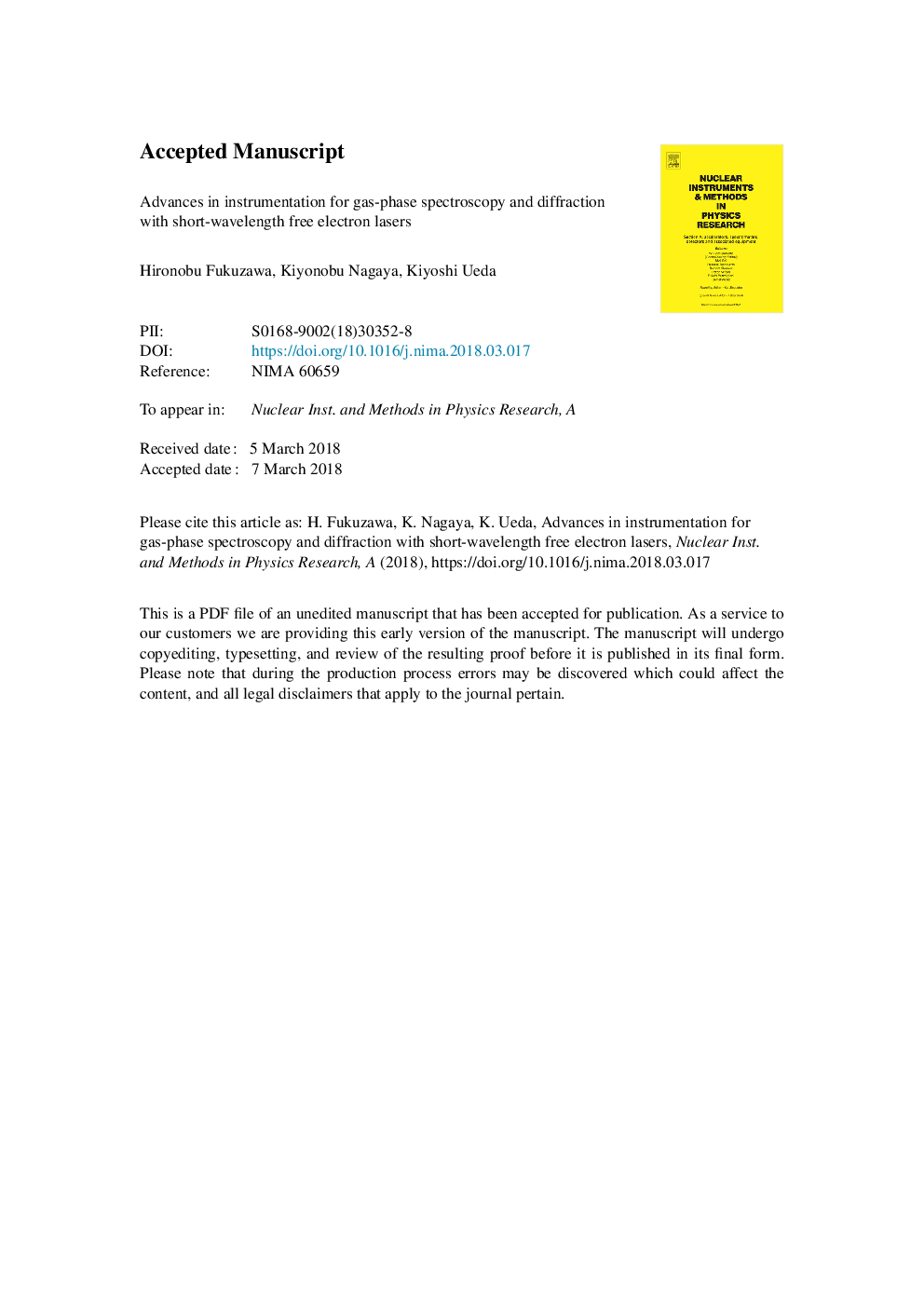| Article ID | Journal | Published Year | Pages | File Type |
|---|---|---|---|---|
| 10156490 | Nuclear Instruments and Methods in Physics Research Section A: Accelerators, Spectrometers, Detectors and Associated Equipment | 2018 | 55 Pages |
Abstract
Free electron lasers (FELs) deliver intense, coherent, femtosecond laser pulses in a short-wavelength range from extreme ultraviolet to X-rays. They are opening new research fields of studying non-linear multiphoton processes in such short-wavelength regimes and of studying ultrafast electron and structure dynamics in various forms of matter. To investigate such processes and dynamics in gaseous samples, i.e., atoms, molecules and clusters, ion and electron spectroscopies are powerful and indispensable. Furthermore, X-ray FELs allow us to obtain a single-shot X-ray diffraction image of a single nanometer-size particle and to study its femtosecond structure dynamics in a time-resolved manner. Although ion/electron spectroscopies and X-ray diffraction are well established techniques in experiments with conventional light sources, such as laboratory X-ray sources, synchrotron radiation sources and optical-laser-based sources at high repetition rates, we met difficulties and problems to be solved, when we tried to use these techniques for experiments with short-wavelength FELs at low repetition rates. In this review article, we describe experimental setups and procedures, as well as procedures of the data analysis, which we developed in order to utilize such short-wavelength low-repetition-rate FEL pulses for studying non-linear/multiphoton processes and ultrafast dynamics in gaseous samples and nanometer-size particles.
Related Topics
Physical Sciences and Engineering
Physics and Astronomy
Instrumentation
Authors
Hironobu Fukuzawa, Kiyonobu Nagaya, Kiyoshi Ueda,
